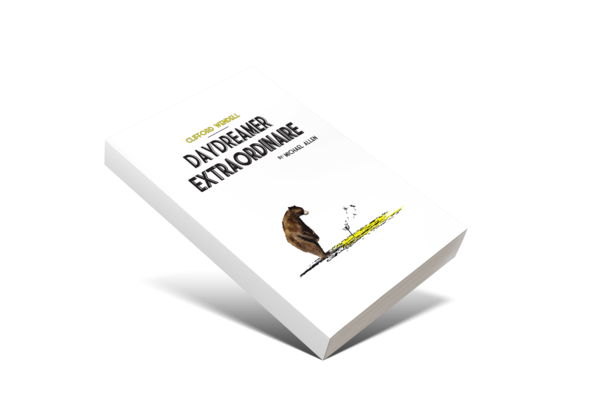Clifford Wendell

Clifford Wendell is a modern version of James Thurber’s Walter Mitty. Clifford is a fourteen year old daydreamer who loves to read and imagines being inside the stories becoming the characters in which he reads. After meeting the beautiful Maris Whittingly in the library, his favorite place to visit, he has a severe accident. While on the mend, he enters a book writing contest and puts his imagination to work to revive the sleepy town of Chance and create a national phenomenon. Everyone who lives in Chance, shares Clifford’s success but at a great price.
This book is an imaginative and uplifting adventure with a strong Catholic appeal. There are no wizards, witches or vampires, yet still succeeds to stir the heart’s imagination and take the reader on a fun and inspiring fantastic ride.
It’s a great book for teachers and students. After reading how Clifford created his book, teachers can take students on their own literary adventure by creating a book writing project shared by the entire class.
Ira Chaleff
I mainly read non-fiction so when I venture into fiction I want it to enthrall me. This book did just that on a number of levels. The theme of this book is imagination, its preciousness, its fragility and its recoverability. To do the theme proud the author’s language itself needed to sing, and it did. He clearly delights in finding the right surprising turn of phrase to capture the reader’s own imagination and bring him under the circus tent of the novel. Like another reviewer observed, this book works well for young folk trying to probe their way into adulthood and for septuagenarians who would do well to find their way back into youthful outlooks. I intend to give it as gifts at both ends of the spectrum. The book has a huge heart, the world it creates invites you to at least vacation in it, and the message it carries is one of great hope without sentimentality. There’s even a nod to God’s beneficence despite the inscrutability of design and painful outcomes. My last venture into fiction that left me this buoyed was Neil Gaiman’s The Ocean at the End of the Lane; not bad company for this author to keep.
– Reviewed in the United States on July 11, 2016
Duane S. Malm
I found it interesting to read that a reviewer recommend this book to teenagers. I am recommending it to septuagenarians and octogenarians.
I found this a truly inspiring book as it made a great case that us older folk should never give up on dreaming and then taking action to make those dreams come true in one way or another. You may be surprised to find that you are not too old to make some dreams come true!
This is such a well written book that I didn’t put it down until I finished the last page.
– Reviewed in the United States on December 30, 2012
BETTY KNAUFF
Clifford did an outstanding job of demonstrating that to produce a quick reading and diverse piece of literature it is good to get others involved in presenting material. Many thoughts are an advantage in producing any good book
– Reviewed in the United States on April 23, 2013
C. J. Colacurcio
Excellent book about awakening the imagination! I enjoyed Clifford and how his imagination would take him far reaching and how he also influenced others in extraordinary ways to tap into their own dreams! Very well written!
– Reviewed in the United States on August 12, 2015
Marnie
This book is an enjoyable read from beginning to end. It will peak your interest form chapter to chapter all the way to the surprise ending. Highly imaginative and fun and a roller coaster for the heart. Young teens will like it but we can all learn something from Clifford Wendell who teaches us to hold on to our youthful imagination all the way to the end of our lives. This is a good book for teachers and potentially a terrific model for a class writing project.
– Reviewed in the United States on November 19, 2011